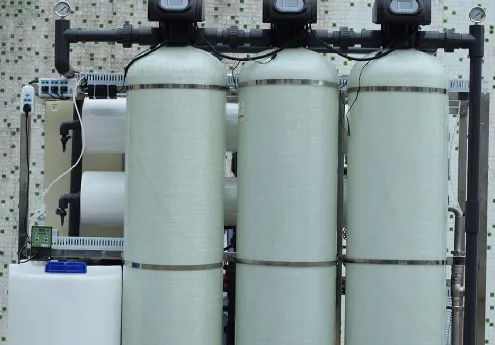loading...
- No. 9, Xingyuan South Street, Dongwaihuan Road, Zaoqiang County, Hengshui, Hebei, China
- admin@zjcomposites.com
- +86 15097380338
- Welcome to visit our website!
gfrp rod
The Role of GFRP Rods in Modern Engineering
In recent years, the engineering and construction industries have made significant strides towards sustainability and efficiency. One of the most notable advancements is the increasing use of Glass Fiber Reinforced Polymer (GFRP) rods. These innovative materials are changing the way we approach reinforcement in concrete structures, offering a range of benefits over traditional steel reinforcement bars (rebars).
What is GFRP?
Glass Fiber Reinforced Polymer (GFRP) is a composite material that combines glass fibers with a polymer matrix. The glass fibers provide strength and flexibility, while the polymer resin adds durability and resistance to environmental factors. GFRP rods are typically lighter than steel, yet they offer comparable strength. This unique combination of properties makes GFRP an attractive alternative to traditional materials in various applications.
Advantages of GFRP Rods
1. Corrosion Resistance One of the most significant advantages of GFRP rods is their exceptional resistance to corrosion. Unlike steel, which can degrade over time when exposed to moisture and chemicals, GFRP is inert and does not rust. This characteristic is particularly valuable in environments exposed to salts, acids, or harsh weather conditions. Utilizing GFRP rods in construction can lead to longer-lasting structures, reducing maintenance costs and the need for repairs.
2. Lightweight GFRP rods are considerably lighter than steel bars. This reduced weight facilitates easier handling and installation, which can lead to significant savings in labor costs and time during construction. Additionally, lighter materials can reduce the overall weight of a structure, allowing for more innovative architectural designs without sacrificing safety or stability.
3. High Strength-to-Weight Ratio While being lightweight, GFRP rods exhibit excellent tensile strength. This high strength-to-weight ratio means that structures can be designed more efficiently, utilizing less material without compromising strength. Engineers can optimize the materials used, leading to more sustainable construction practices and reduced environmental impact.
gfrp rod

4. Thermal Insulation GFRP materials have low thermal conductivity compared to traditional metals. This property can contribute positively to energy efficiency in buildings, as it reduces heat transfer. By reducing thermal bridges, GFRP rods can help maintain more consistent internal temperatures and aid in energy conservation.
5. Non-Magnetic and Non-Conductive GFRP rods are non-magnetic and non-conductive, making them ideal for applications in sensitive environments, such as telecommunications, hospitals, and laboratories. Their use can prevent interference with electronic equipment and reduce safety risks in environments where electricity is present.
Applications of GFRP Rods
GFRP rods are finding a growing number of applications across various sectors of the construction and engineering industries. They are particularly useful in
- Bridge Construction and Rehabilitation GFRP rods can enhance the durability and lifespan of bridge structures, providing resistance to environmental stresses and extending maintenance intervals. - Building Reinforcement In residential and commercial buildings, GFRP rods can be used for both new builds and retrofitting existing structures, improving their resilience against harsh environmental conditions or seismic activities. - Infrastructure Projects Projects like tunnels, dams, and seawalls can greatly benefit from GFRP due to its strength and corrosion resistance, leading to safer and more durable infrastructures.
Conclusion
The future of construction lies in innovative materials that provide enhanced performance, sustainability, and efficiency. GFRP rods represent a significant step towards modernizing engineering practices. With their corrosion resistance, lightweight characteristics, superior strength, and versatility, GFRP rods offer a compelling alternative to traditional steel reinforcement. As awareness of these benefits continues to grow, we can expect GFRP technology to play an increasingly prominent role in various construction projects, paving the way for safer, longer-lasting, and more efficient structures.
-
The Rise of FRP Profiles: Strong, Lightweight, and Built to LastNewsJul.14,2025
-
SMC Panel Tanks: A Modern Water Storage Solution for All EnvironmentsNewsJul.14,2025
-
GRP Grating: A Modern Solution for Safe and Durable Access SystemsNewsJul.14,2025
-
Galvanized Steel Water Tanks: Durable, Reliable, and Ready for UseNewsJul.14,2025
-
FRP Mini Mesh Grating: The Safer, Smarter Flooring SolutionNewsJul.14,2025
-
Exploring FRP Vessels: Durable Solutions for Modern Fluid HandlingNewsJul.14,2025
-
GRP Structures: The Future of Lightweight, High-Performance EngineeringNewsJun.20,2025
